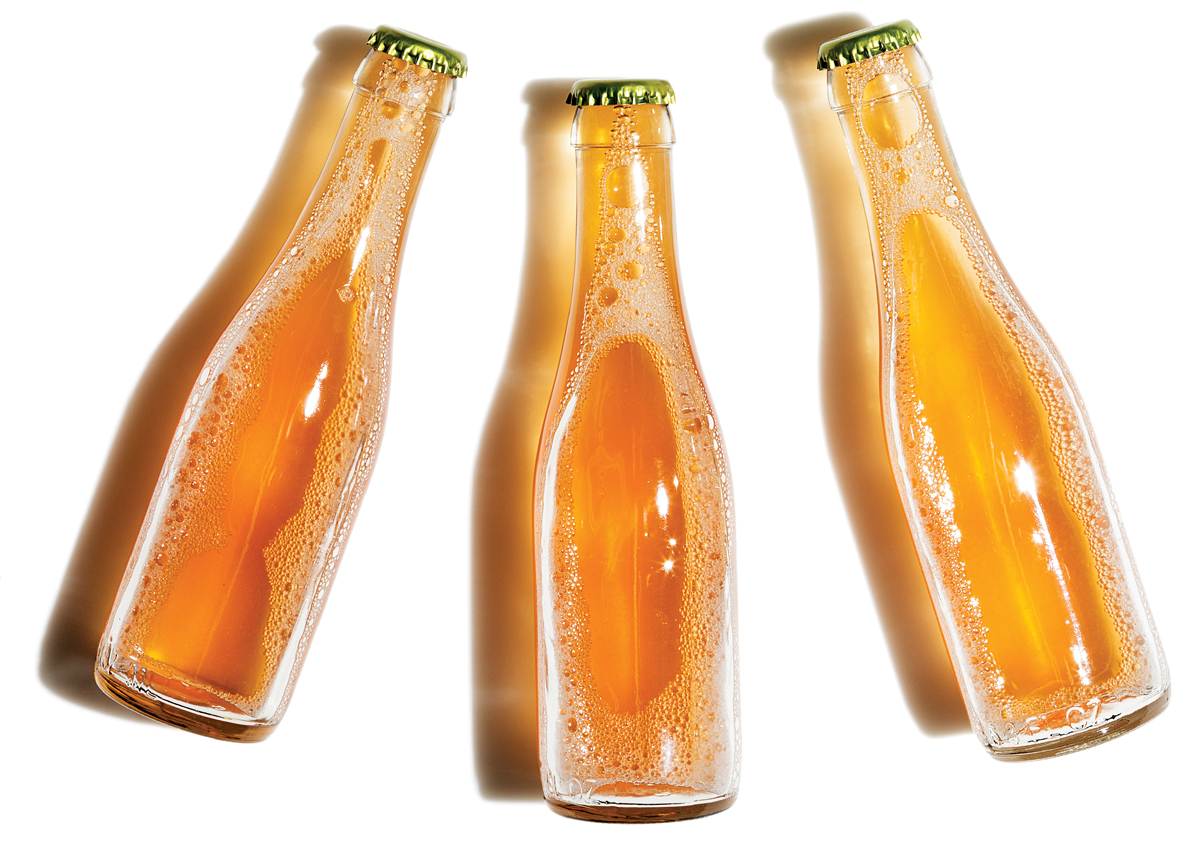Fizz Without the Fizzle: How Boston Bartenders Carbonate Cocktails

Photograph by Dave Bradley. Styling by Rowena Day/Ennis.
“Hat on a Bat”
JM Curley
To evoke a rum-and-coke sans cola, bartender Daren Swisher combines barrel-aged rum that’s been infused with vanilla, nutmeg, green cardamom, and sarsaparilla with burnt Demerara-sugar syrup and distilled water. The mixture is force-carbonated—a process often used by home brewers to carbonate test batches of beer—in an empty plastic two-liter soda bottle fitted with a CO₂ regulator, tank, and carbonation cap, then poured into single-serve bottles, capped, and labeled. The result is a complex drink with a nostalgic Coke Classic vibe.

Photograph by Dave Bradley. Styling by Rowena Day/Ennis.
“The Van Cleef”
Fairsted Kitchen
At this new Brookline haunt, bar manager Patrick Gaggiano fizzes up drinks in glass champagne bottles using a special plastic device invented by Pomodoro’s Stephen Shellenberger. The goal? To achieve the tighter, smaller bubbles you’d find in a flute of Dom Pérignon. For the bar’s apéritif cocktail “The Van Cleef,” Gaggiano blends Cappelletti—a softer alternative to Campari—with Cocchi Americano, simple syrup, and water before giving it a dose of CO₂. The libation is offered in both single-serve containers and, for a crowd, corked champagne bottles.


